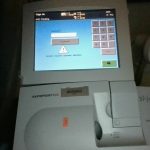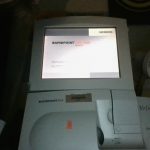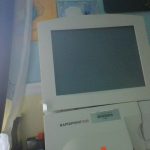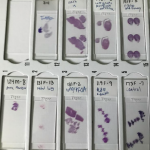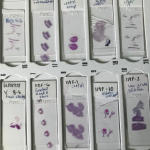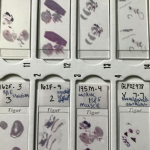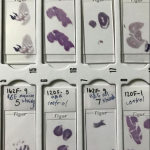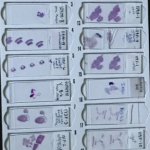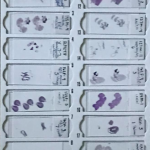Andrei, you signed up for a summer internship project that will take a lot of your time and effort. This will not be easy. Please set your expectations that there will be a lot of work to do. Please use this page as your science notebook for your summer internship – all your answers, observations, questions, and results – all should be added here on this page (you can add text and post pictures here; using this page will also teach you how to use the WordPress platform).
Please start with internet research regarding the instrument you received by answering the following questions (copy/paste will not work, you will need to perform the internet research using google.com and then write your own answers to the following questions):
Model and name of the instrument: Rapidpoint 405 Siemens-Automatic QC
What is it used for? This device uses a blood test to see what the blood has inside of it (electrolytes,glucose,hematocrit). The main advantage of this device is that it is in most of the sick patients possession,they can test the blood right away without having to go anywhere and take more time up.
Who needs it? Doctors that need the blood sample results as fast and as soon as they can get them.
Its is May 27th, I am still looking for a good user manual on the internet. But at least the device works. And here are the images of it working and requesting the passcode.
Early June 2020, the project was changed to the microscopy project, as described – please follow the guide below:
From Dima: Please start with internet research regarding the instrument you received by answering the following questions (copy/paste will not work, you will need to perform the internet research using google.com and then write your own answers to the following questions):
Model and name of the instrument: LABOMED, microscope
What is it used for? A microscope is used for viewing small objects like blood cells and any other cells, we also use it because we can not see any of the small objects with the naked human eye.
Who needs it? Doctors that study all types of blood cells and certain bad cells that can be treated.
What parts is it made of?
- Head/Body houses the optical parts in the upper part of the microscope.
- Base of the microscope supports the microscope and houses the illuminator.
- Arm connects to the base and supports the microscope head.
- Plastic
- Glass
- Lenses
How does it work? Describe in great detail. On the microscope there are 2 buttons on the side, the bigger button adjusts the height of the plate in a way that isn’t supper accurate.The smaller one makes it more accurate once you have already gotten the big one set up. On the side of the plate there is a button that adjust how far the object that you want to view. The other one can move it from side to side. At the top of the microscope there is the different viewing points of the object, you can zoom it in and out. You look inside a small pipe that can be zoomed in and zoomed out. The microscope also has a “on” and “off” switch, the “o” indicates that it is off and the “-” indicates that it is on.
Were you able to find an instrument manual online? Yes i was able to find a manual.
Read the manual. Describe what was clear in the manual and what was confusing. The way of operating the microscope did not seem difficult or confusing, neither did all of the pieces that the microscope had, the part i found difficult was the CARE AND MAINTENANCE OF THE MICROSCOPE.
Read the details on what is Histology, how H&E works, how to identify different type of cells and tissue (how different disease cells/tissues look?):
A Beginner’s Guide to Haematoxylin and Eosin Staining
https://histology.leeds.ac.uk/what-is-histology/H_and_E.php
After you have completed internet research, try to turn on the instrument and see what happens. Make a picture and post it here. You may be missing power cord and/or adapter cables (find out what cords/cables/adapters are missing, find missing part on Amazon or Ebay, and post Amazon/Ebay link here, so I can get you the missing part). Some instruments been in storage and are very dusty – clean them with Windex spray and paper towels (your parents got a cleaning supplies cabinet somewhere in your house, find it).
Try to operate the instrument using the manual … is it working? Do you need certain supplies to make it work? Find the catalog numbers (from the manual) of the required supplies, where from they are available and post here links of what we need to order. Post here results of your testing, and how do you plan to move forward.
Yes the device is working, and no i do not need any supplies, everything is in its place and nothing is missing, the light is working very well.
This is your notebook now … write and post answers and pictures below:
Andrei:
Today I have managed to barley take a picture of the item, i am now trying to identify what the small item is! Now i am going to identify the item and take a picture of it once i have identified it.

I am still trying to identify what it is but i am starting to get the hang of it, i have taken another picture that is more clear of the same object.

A new picture that is zoomed out further than the one before.

The microscope is in great condition and is working very well and is very precise.

I took a new picture of a new cell and i have found some spots that are rich in hemoglobin, the object that i took is called The cytoplasm of erythrocytes.

In this picture i was using pixlr to add the names of the little objects in the cell, the picture i am using is different than all the other ones.

I took a picture of the little slides of the cells above this picture.

This here is a picture of GINGER, if you look at a small piece of GINGER you can sometimes see the water like objects splitting and getting smaller.

This picture here is not any of the slides that I was given, I tried to use a little leaf and these are the results and pictures that i got from my phone. The green parts of the leaf are the cells themselves and the white part is the border of the cells. The cells are green because of the clorophene.
This is a video of the GINGER splitting into smaller bubbles, I was not able to post it as a image or audio or video so I had to post it on YouTube and here it is. Watch it on YouTube: Ginger and water under microscope.

Later on I decided to get some more objects that are easy to find, this object that I took here is a peach. This was made under the strongest magnification. You can most likely see the hair on the peaches surface.

I also took another leaf that I thought would look cool under the microscope, and as you can see there are many little lines that are separating them all the cells from each other.

In this picture I took a piece of paper and put it up to the microscope, it was very plane and there was no color to it, but you are still able to see the little lines.

